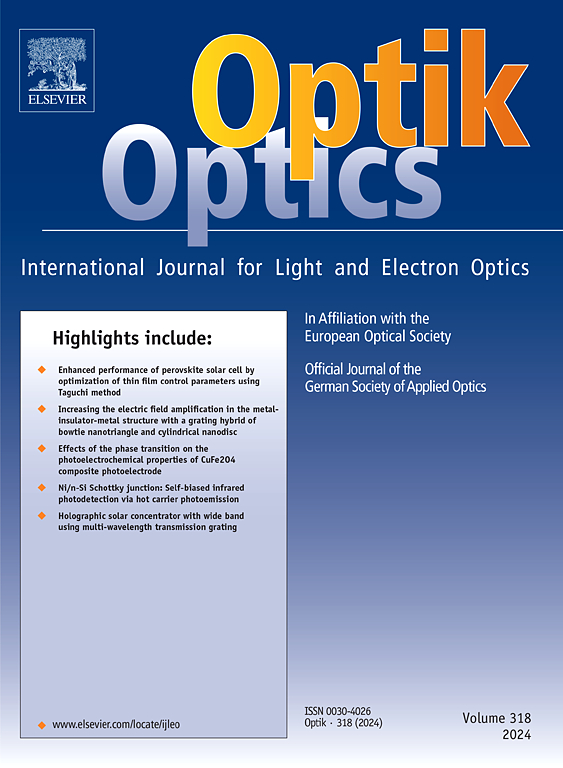Tuning WO3 film properties for electrochromic applications via annealing and oxygen pressure
IF 3.1
3区 物理与天体物理
Q2 Engineering
引用次数: 0
Abstract
The objective of this investigation was to examine the intricate relationship between annealing temperature and oxygen partial pressure (PaO2) in regard to morphological, structural, and electrochemical properties of tungsten trioxide (WO3) films that were produced through sputtering. The films were deposited under two different PaO2 values, specifically 0.3 mTorr and 0.5 mTorr, and then underwent annealing at various temperatures: room temperature, 100, 200, 300, and 400 degrees Celsius. X-ray diffraction (XRD) analysis revealed a temperature-dependent transition from an amorphous to a crystalline phase. Morphological analyses conducted with scanning electron microscopy (SEM) indicated a trend towards a smoother surface as both the annealing temperature and PaO2 rose. At 400 °C, the films exhibited a granular surface finish. Significantly, the film fabricated at 0.3 mTorr and subjected to room temperature (RT) annealing showed cracks, indicating inherent stress in the film. Electrochemical evaluations revealed that the WO3 film deposited at 0.5 mTorr and annealed later at 200 °C demonstrated enhanced redox performance, better diffusion of ions, and remarkable reversibility. Impressive results were demonstrated in optical studies, attaining 83 % optical modulation, colouration efficiency (CE) up to 30.54 cm²/C, and swift switching durations of 1.17 s for colouration and 0.82 s for decolouration. Moreover, cycling tests showed negligible degradation after 100 cycles for the films deposited at 0.5 mTorr PaO2 and treated at 200 °C, emphasizing their resilience. This study furnishes a comprehensive knowledge of the consequences of annealing temperature and PaO2 collectively on WO3 films, highlighting the novel strategy of enhancing electrochromic efficacy by modifying temperature and meticulously balancing the PaO2, thus contributing to the progress of energy-efficient smart materials.
通过退火和氧气压力调整电致变色用WO3薄膜的性能
本研究的目的是研究退火温度和氧分压(PaO2)对溅射制备的三氧化钨(WO3)薄膜的形态、结构和电化学性能的复杂关系。薄膜在两种不同的PaO2值下沉积,分别为0.3 mTorr和0.5 mTorr,然后在不同的温度下退火:室温,100,200,300和400摄氏度。x射线衍射(XRD)分析揭示了从非晶相到晶相的温度依赖转变。扫描电镜(SEM)形貌分析表明,随着退火温度和PaO2的升高,表面趋于光滑。在400 °C时,薄膜表面呈现颗粒状光洁度。值得注意的是,在0.3 mTorr下制备的薄膜经过室温(RT)退火后出现裂纹,表明薄膜存在固有应力。电化学评价表明,在0.5 mTorr下沉积的WO3膜在200 °C下退火后具有增强的氧化还原性能,更好的离子扩散和显著的可逆性。在光学研究中展示了令人印象深刻的结果,获得了83% %的光调制,着色效率(CE)高达30.54 cm²/C,着色和脱色的快速切换持续时间分别为1.17 s和0.82 s。此外,循环试验表明,在0.5 mTorr PaO2下沉积并在200 °C下处理的薄膜在100次循环后的退化可以忽略,强调了其弹性。本研究全面了解了退火温度和PaO2共同对WO3薄膜的影响,强调了通过改变温度和精心平衡PaO2来提高电致变色效率的新策略,从而促进了节能智能材料的发展。
本文章由计算机程序翻译,如有差异,请以英文原文为准。
求助全文
约1分钟内获得全文
求助全文
来源期刊

Optik
物理-光学
CiteScore
6.90
自引率
12.90%
发文量
1471
审稿时长
46 days
期刊介绍:
Optik publishes articles on all subjects related to light and electron optics and offers a survey on the state of research and technical development within the following fields:
Optics:
-Optics design, geometrical and beam optics, wave optics-
Optical and micro-optical components, diffractive optics, devices and systems-
Photoelectric and optoelectronic devices-
Optical properties of materials, nonlinear optics, wave propagation and transmission in homogeneous and inhomogeneous materials-
Information optics, image formation and processing, holographic techniques, microscopes and spectrometer techniques, and image analysis-
Optical testing and measuring techniques-
Optical communication and computing-
Physiological optics-
As well as other related topics.
 求助内容:
求助内容: 应助结果提醒方式:
应助结果提醒方式:


